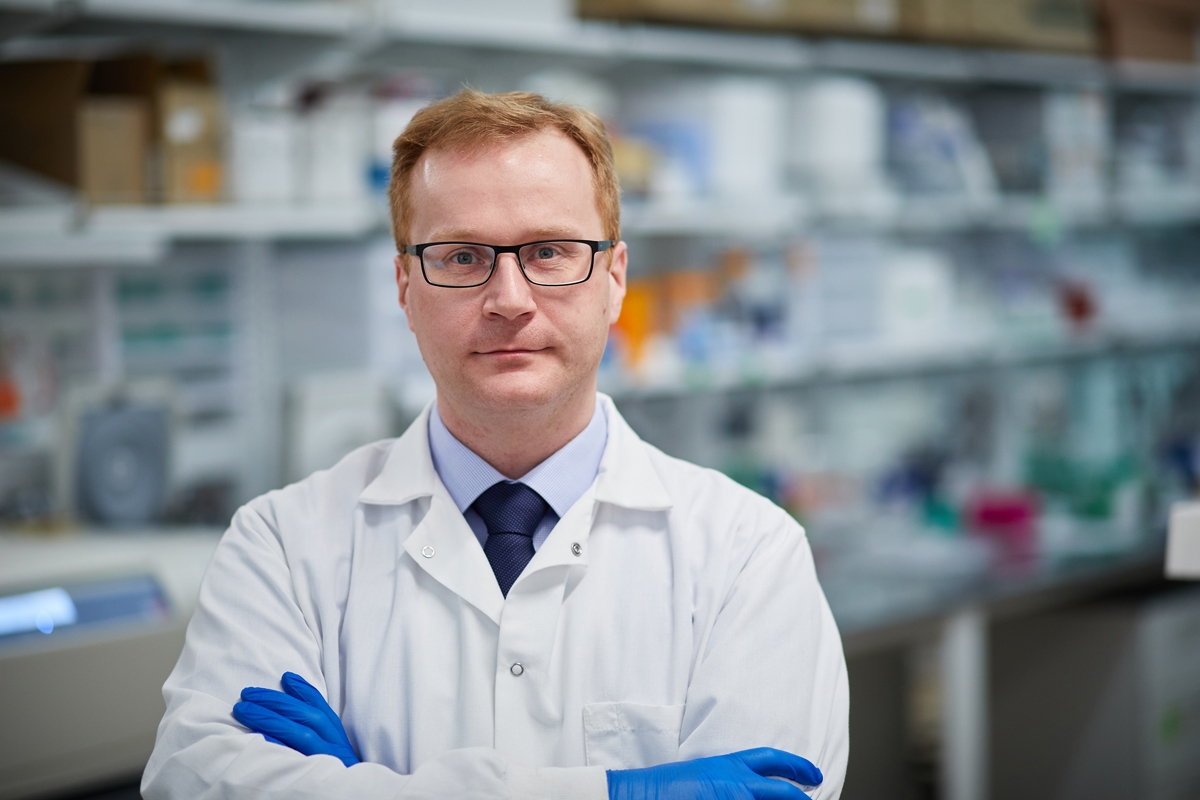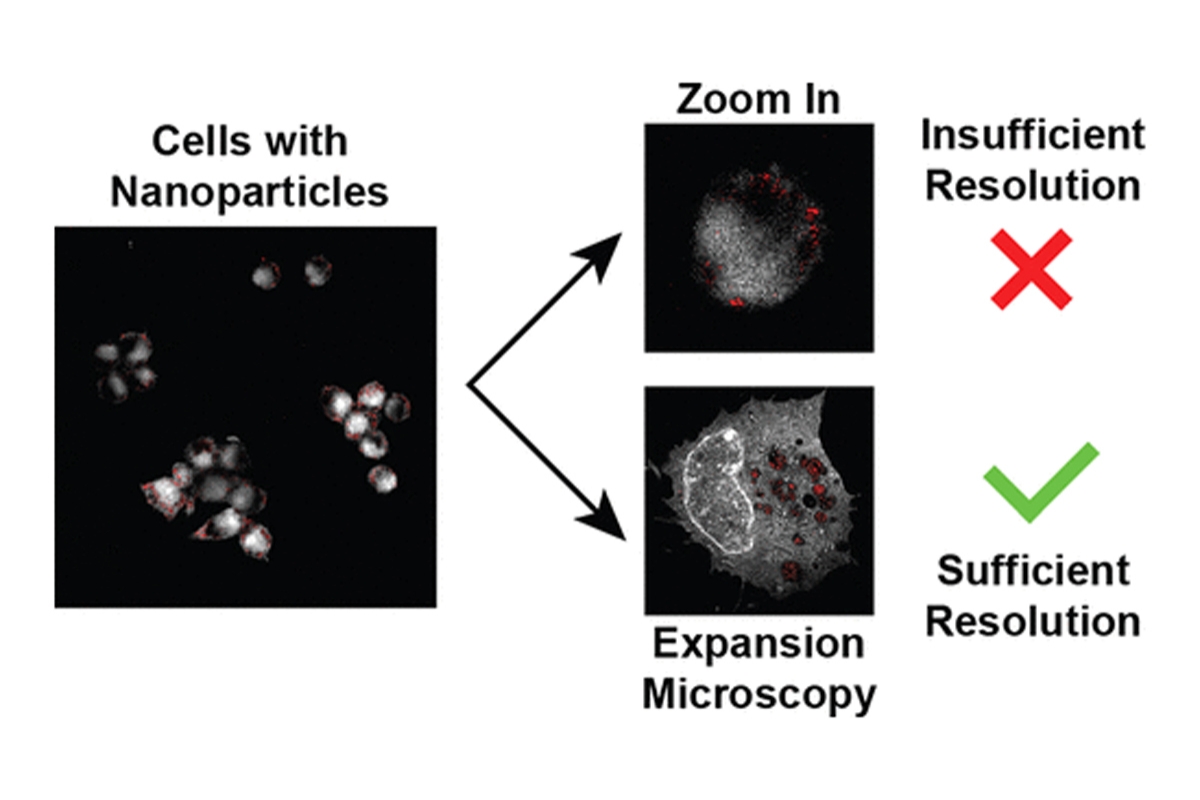Led by Stefan Wilhelm, Ph.D., assistant professor in the Stephenson School of Biomedical Engineering at the University of Oklahoma, a team of researchers from the Gallogly College of Engineering at OU, OU Health Sciences Center and Yale University recently published an article in ACS Nano that describes their development of a super-resolution imaging platform technology to improve understanding of how nanoparticles interact within cells.
As technology-driven capabilities in engineering and healthcare are ever increasing, scientists and engineers are developing new technologies to advance the future of health. One such area, nanomedicine, explores the use of nanoparticles for drug delivery in the body to fight against infectious diseases or cancer. The assessment of these nanomedicines in cells, tissues and organs is often performed by optical imaging, which can have a limited quality of imaging resolution. New imaging technologies are needed to see nanoparticles in their 3-D ultrastructural context within biological tissues.
“To see nanomedicines in biological samples, researchers either use electron microscopy, which provides excellent spatial resolution but lacks 3-D imaging capabilities, or optical microscopy, which achieves excellent 3-D imaging, but exhibits relatively low spatial resolution,” Wilhelm said. “We demonstrate that we can perform 3-D imaging of biological samples with electron microscopy-like resolution. This technique, called super-resolution imaging, allows us to see nanomedicines inside individual cells. Using this new super-resolution imaging method, we can now start to track and monitor nanoparticles inside cells, which is a prerequisite for designing nanomedicines that are safer and more efficient in reaching certain areas within cells.”



